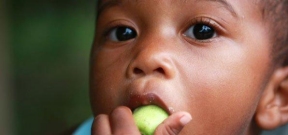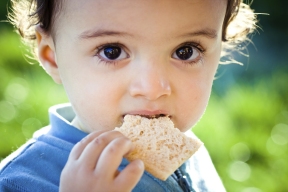
While most Americans will worry about eating too much this holiday season, 16 million of our country’s children live in households that struggle to afford food, according to a 2012 report from the United States Department of Agriculture. “We hear about ‘food insecurity’ quite a bit, especially after the 2008-09 economic crash, but I think most people don’t have a clear picture of what that means,” says Lois Brandt, a former Peace Corps volunteer and author of “Maddi’s Fridge,” (www.MaddisFridge.com), a children’s picture book that asks the question: what do you do if your best friend’s family doesn’t have enough food? Brandt suggests four things you can do to help prevent childhood hunger.
Support non-profit organizations like Feeding America (www.FeedingAmerica.org). Previously known as Second Harvest, Feeding America is a national network of food banks that feeds more that 37 million people through food pantries, soup kitchens and shelters. It’s the nation’s leading organization for countering hunger and educating the public about this crisis.

Talk to your children about childhood hunger and how they can help. “When I was a child I opened my best friend’s refrigerator to get a snack and was shocked to see it held almost nothing,” she says. “I didn’t know what to do.” As an adult, Brandt says she’s amazed by the number of people who share with her their own stories of childhood food insecurity. Taking action teaches children that they do have the power and ability to change the world for the better.
Volunteer with your family at a shelter or food pantry during the busy holiday season. While serving or cooking food for a holiday-themed meal at a shelter during Thanksgiving or Christmas does not solve the larger problem, it will affect every person whose life you touch that day. Your efforts and kind words can become a fond, lifelong memory for a child, or remind adults that others care and they’re not alone.











